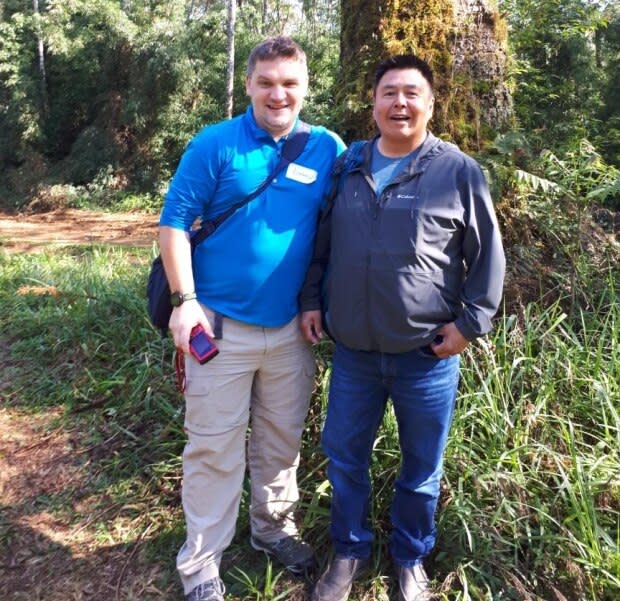How Kakisa, N.W.T., is looking to Brazil for inspiration on how to grow food
A Northwest Territories First Nation is looking to Brazil for inspiration on how to sustainably grow food.
Ka'a'gee Tu First Nation Chief Lloyd Chicot recently returned from a tour of Indigenous communities in the southern part of the country with Andrew Spring, a professor at Wilfred Laurier University. Spring has spent the past five years in Kakisa, working with community on new ways to grow, hunt and gather their own food.
"Food systems in the Northwest Territories, it's all about taking care of the land, it's all about the traditional food system of hunting, gathering, fishing," said Spring.
"So we don't want agriculture, were it to be developed, to have any negative impacts on the land or the water or the animals. Brazil gave us this really interesting opportunity to experience how communities down there grow food and take care of the forest."
Both Chicot and Spring were struck by how similar the way of life for Indigenous people in Brazil is to the way of life in the Northwest Territories.
Chicot was struck by how drums play an important role in their culture, and Spring spoke to how Indigenous groups tend to share and work for the benefit for the whole community.

"That was really inspiring," said Spring.
"How the community works together to take care of the land, they share their harvest."
Chicot and Spring made the trip as part of a partnership grant called FLEdGE: Food, Locally Embedded, Globally Engaged, run through Wilfred Laurier University. It's a research and knowledge sharing initiative to study how local food systems work around the world.
Spring described how the Yerba mate plant, which is used to make tea, can naturally regenerate forest growth in South America, and how Indigenous communities have had luck using it to that effect.
Fish composting
Back in Kakisa, people in Ka'a'gee Tu First Nation have been experimenting with lots of different ways to approach growing food. They recently started a composting program, and are experimenting with how to incorporate more fish into that mix.
They are also contemplating the idea of using a fire break around the community as a plot to grow food, as well as studying the impact the wild onion plant has on the surrounding forest.
Chicot said his community members are already doing similar things themselves, but are interested in learning ways to do it better.
"We go harvesting in spring, fall, summer, and winter, so we are always out there watching," he said.
"Whatever they shoot, they look at see if anything is wrong. Any time they are travelling they go out looking at the land to see if anything is happening out there. All of that information that comes back, we use it to see how it's gonna be in the next year, and the next couple years, so I guess it's a good thing in the long run."
Spring says one of the community's goals is to get to the point where they aren't just growing food for themselves, but helping to supply to farmers markets in neighbouring regions, including Yellowknife.

